
The floating lighthouse "Irbensky" is an original museum vessel moored at the quay of the embankment of the Historical Fleet and is part of the complex of objects of the Museum of the World Ocean of the city of Kaliningrad.
A floating lighthouse is one of the means of navigation - a ship of special construction on which a lighthouse is installed, equipped with a powerful light source, used away from the coastline and at the entrances to the port as a pilot station. The special design allows you to use the floating beacon for a long time anchored in the open sea. Floating lighthouses are painted in bright colors, and their location is constantly monitored by the captain.
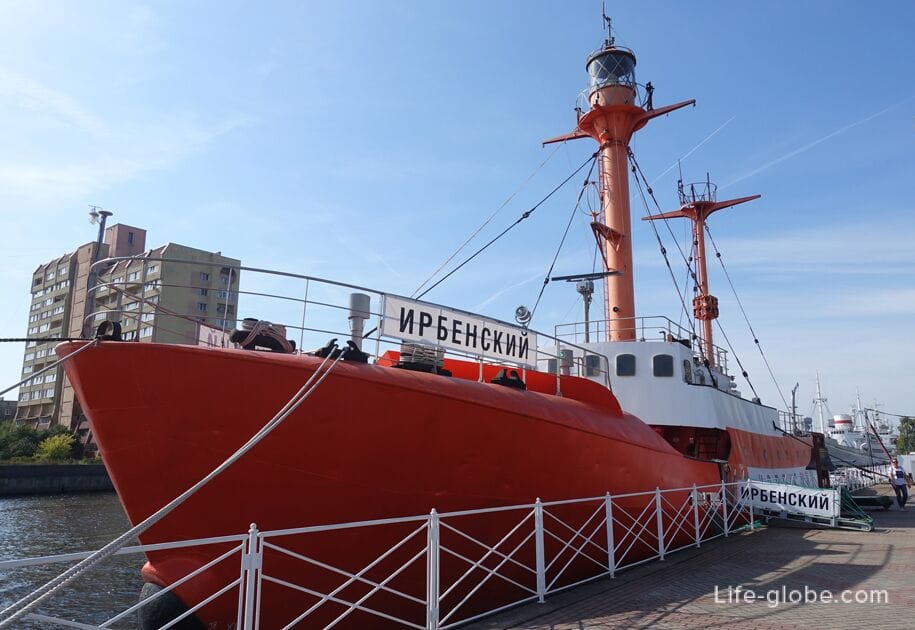
Currently, the Irbensky floating lighthouse is a unique museum-certified vessel, on board of which an exposition from the history of navigation and lighthouse business is presented.
The lighthouse was built in 1962. The place of construction is the shipyard "Laivateollisuus" (Turku, Finland).
On the night of June 29-30, 2017, the Irbensky floating lighthouse moored at the museum pier, and almost immediately after that, work began on its restoration and museumification.
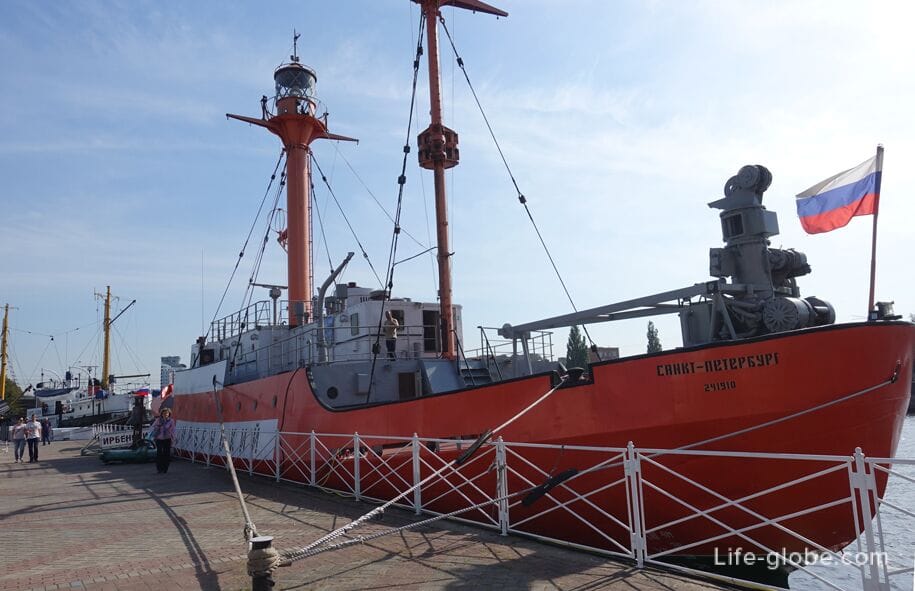
Visiting the museum floating lighthouse "Irbensky" in Kaliningrad, you will learn: what is a lighthouse, the device of lighthouses, what are lighthouses, the history of lighthouses; you will visit cabins, radio and navigation cabins, see a fragment of a collection of miniature samples of military equipment and many other, no less useful and interesting information.
A radio room is a specially equipped enclosed room on the Irbensky or any other vessel in which radio communication and surveillance equipment is installed.
From the radio room, the floating beacon was connected with the managers and other coastal points, ships and ships.
The task of the radio operator was to constantly maintain reliable communication with the outside world. The radio operator transmitted radio messages to the shore about the completion of the task, about the condition of the ship and crew, holiday greetings; received orders from the command post, navigation warning messages, weather reports, as well as personal radiograms.
The control points of the Irbensky floating lighthouse were: the fleet command post at the headquarters of the Baltic Fleet in Kaliningrad and the command post of the hydrographic service area in Riga.
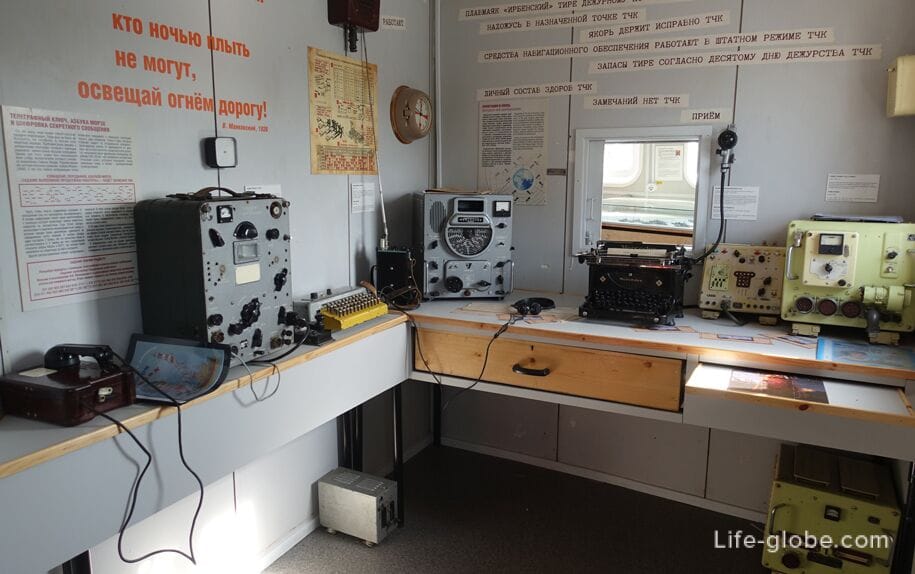
Layouts of lighthouses or rooms for beacon devices, each of which can be turned on.
In the lighthouse there were the main instruments for controlling navigation equipment by turning on a radio beacon, a sound signal installation (a voice recorder) and an underwater sound beacon. The main unit was the automatic operation of the light beacon (BARSM), which was responsible for the operation of the light-optical apparatus. The watch was kept around the clock.
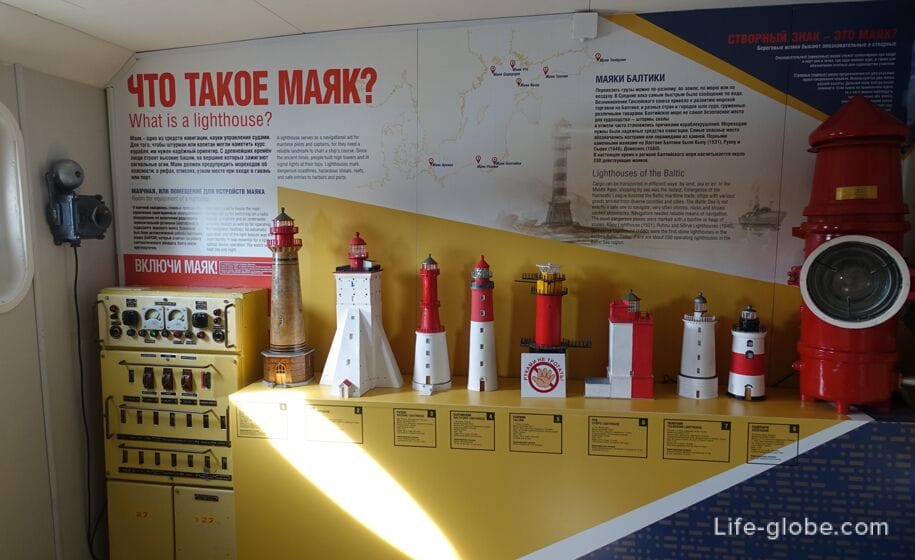
The wheelhouse. The vessel is controlled from the wheelhouse. Depending on the type of vessel and the historical period, the wheelhouse had different names - the wheelhouse, the captain's bridge and the running bridge.
The captain, the navigator of the watch and the helmsman of the watch are on watch in the wheelhouse, while the navigator of the watch or the sailor of the watch are standing at the lighthouse service point.
In the wheelhouse of the Irbensky lighthouse, a machine telegraph is installed to control the main engine, a steering column with a steering wheel, in front of which there is a magnetic compass on the binnacle, a navigator's table with a nautical navigation map, behind which there is a circular view indicator of the Don radar station to monitor the surface situation in poor visibility and at night.
The aft bulkhead is equipped with a remote control and a speaker of the Chestnut in-ship intercom and a radio telephone of the VHF radio station "Raid" bands for negotiations between ships and coastal points within a line of sight.
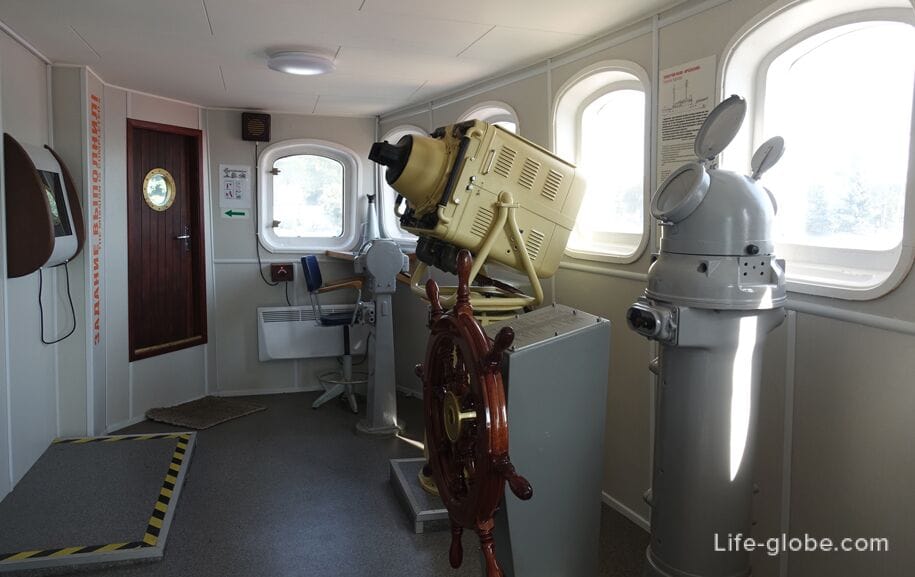

A fragment of the collection of miniature samples of military equipment, which became the armament of the USSR, the GDR and Poland in the post-war period, by the German collector Jurgen Brumann.
Jurgen Brumman has been collecting his unique collection throughout his life, for more than 60 years. Today there are 3,000 copies in his collection, among which 1,700 are miniature models of ships. In 2017, the collector decided to transfer the entire collection to the Museum of the World Ocean. The solemn ceremony of handing over the first 53 miniature models of ships took place on October 31, 2017 at the Embassy of the Russian Federation in Germany.
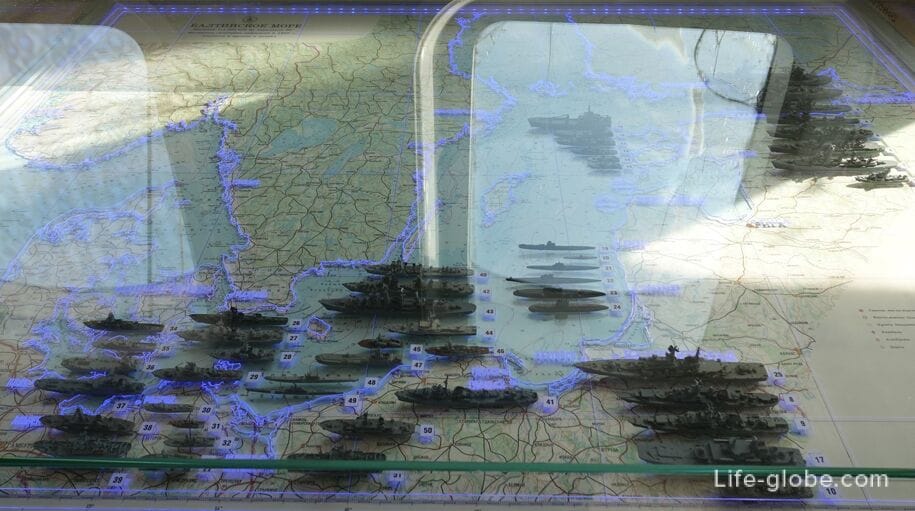
Cabins
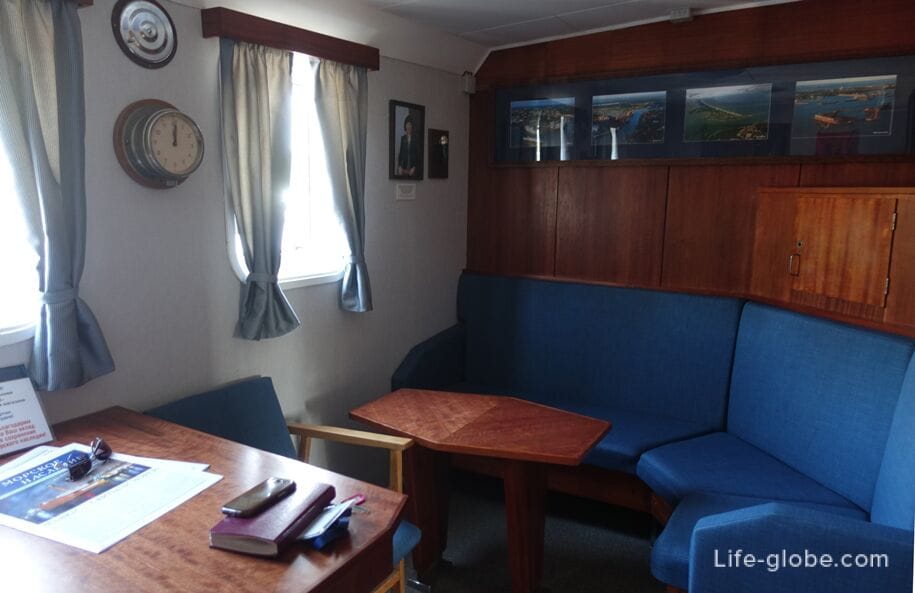
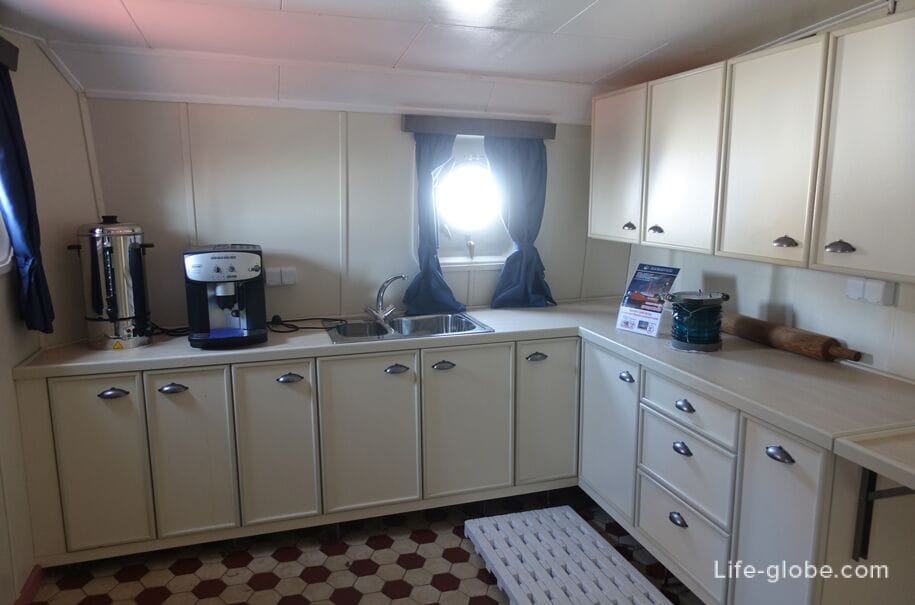
On the embankment, near the floating lighthouse "Irbensky", there is a bronze Fog bell of the lighthouse, 1885.
The bell was intended to sound a beacon with the specified characteristics in conditions of poor visibility (fog). Bells of a similar design were installed on coastal and floating lighthouses. Later they were replaced by more modern audio-signal devices - nautophones.
This bell was presumably installed on the island of Mohni (Estonia). In the 1960s, it was transported to Kaliningrad and installed in the building of the Hydrographic Service of the Baltic Fleet. In 1995, by the decision of the Commander of the Baltic Fleet, the bell was donated to the Kaliningrad Diocese of the Russian Orthodox Church for the Church of the Saviour of the Miraculous Image located on Victory Square in Kaliningrad, later transferred to the belfry of the Church of the Assumption of the Blessed Virgin Mary on Peter Panin Street.
In August 2017, representatives of the Kaliningrad Diocese of the Russian Orthodox Church donated the bell to the Museum of the World Ocean.
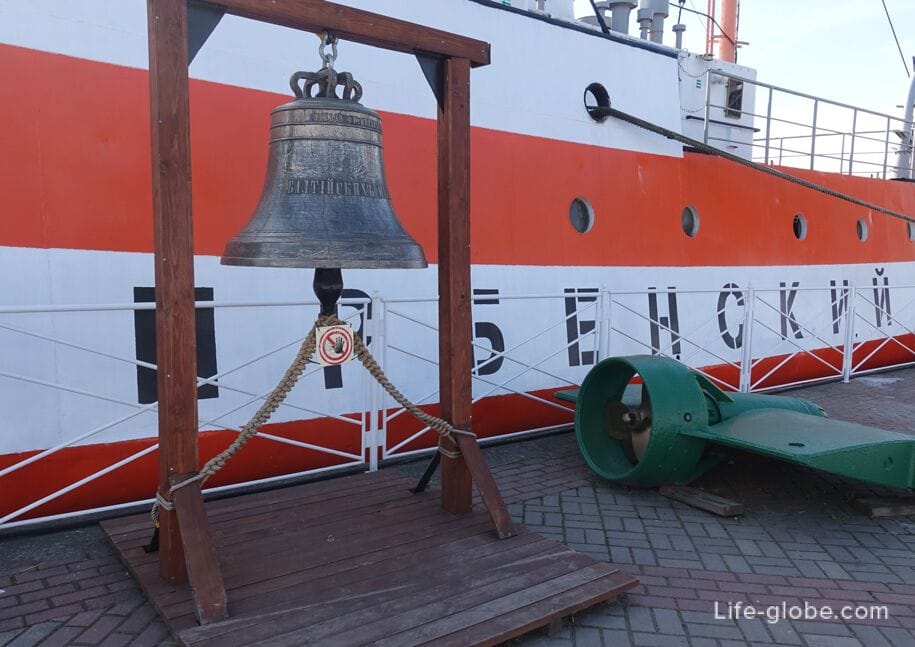
Location of the museum floating lighthouse "Irbensky" in Kaliningrad: embankment of the Historical Fleet of the Museum of the World Ocean, address: Peter the Great Embankment, 1, Kaliningrad.
Visit to the museum floating lighthouse "Irbensky" in Kaliningrad: there are infotables in the compartments of the lighthouse. You can find out the time of excursions and the cost of tickets on the official website of the Museum of the World Ocean. Tickets can be purchased at the ticket offices of the Museum of the World Ocean.
Official website of the Museum of the World Ocean in Kaliningrad: world-ocean